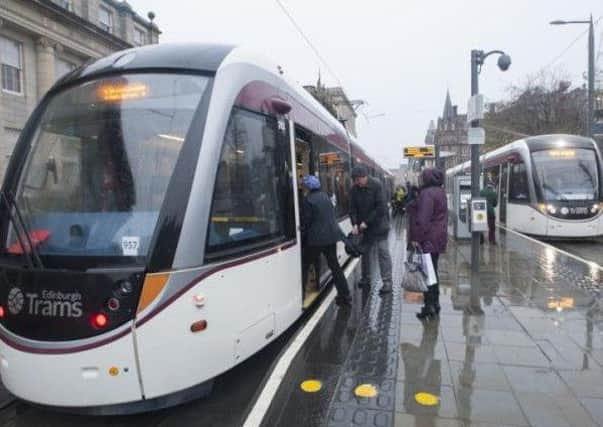Edinburgh Tram Inquiry: Contractor used '˜agressive' approach


Dave Anderson, who was director of city development from 2008 until 2012, accused lead contractor Bilfinger Berger of adopting a “very aggressive” approach.
Advertisement
Hide AdAdvertisement
Hide AdAnd he said when it came to the dispute which halted work in Princes Street in early 2009 they failed to work within the “spirit of co-operation” they had signed up to in the contract.
Asked when he first became aware of the Princes Street dispute , he told the inquiry: “It was an image of David Mackay with a tin helmet shown in Princes Street in the Evening News.”
A story under the headline “Tram Wars” revealed that contractors Bilfinger Berger were demanding up to £80m extra.
Mr Anderson said Mr Mackay had briefed him a couple of days earlier about the figures Bilfinger were looking for.
Advertisement
Hide AdAdvertisement
Hide AdHe said the dispute arose from concerns about the underground conditions in Princes Street and the additional work that would be needed.
He said: “It was perceived to be a gun to the city’s head. We needed to get on with the work in February, to complete for late November, to give the retailers the opportunity for a decent Christmas in the midst of a major recession.”
Mr Anderson said some of the behaviour of the consortium was “unacceptable”.
“They were in my view claiming excessive amounts for designs. They were failing to expedite designs in a timely manner.
Advertisement
Hide AdAdvertisement
Hide Ad“They were late in mobilising their subcontractors. They generally had a view that they were in a position to control the pace of the contract.
“There were large sections of the route that were available and open for work - they could have worked on the off-street sections, and they weren’t doing that. So there were huge frustrations about the consortium’s behaviour.
“But I would like to single out Bilfinger, because my experience of dealing with CAF [responsible for tram vehicles} was first class. And likewise, Siemens [also part of the consortium] were reasonable people to deal with.”
But Mr Anderson also criticised council tram firm TIE. “My view at that time was that TIE was not fit for purpose. They lacked competence in some areas.”
Advertisement
Hide AdAdvertisement
Hide AdHe said it would have been better to get an established engineering consultancy to do the job rather than set up an arms-length company “staffed largely by people with no prior experience of delivering tram or light rail projects”.
He said he had helped appoint TIE chief executive Richard Jeffrey.
“I had known Richard from my time at Scottish Enterprise and his time at the airport.
“I did have a lot of confidence in Richard when he came in.”
Advertisement
Hide AdAdvertisement
Hide AdBut he said that was undermined when despite its robust stance TIE started to lose adjudication decisions over disputes with the contractors.
He was asked about Lothian Buses boss Neil Renilson who was given a responsibility for the trams as chief executive of Transport for Edinburgh Ltd.
“My sense was that Neil Renilson didn’t believe the business case and saw the possibility of 11 routes being taken off Leith Walk as a threat to Lothian Buses. It was undoubtedly a concern that someone who ought to have been championing the project appeared to have some pretty fundamental doubts about it.”
Mr Anderson said there was general surprise at the £776m price agreed through mediation in 2011. “That was at the top end of expectations given it was only to St Andrew Square.
Advertisement
Hide AdAdvertisement
Hide Ad“If you go back to the original £375m budget that’s three quarters of the route for twice the price.” He said it was too high by about £50-£75m.
But he added: “We had been in an embattled environment for 18 months. The city was dug up in multiple locations. I was spending a lot of my time assuaging Gordon Drummond at Harvey Nichols and other retailers. It was better to get an asset than abandon the project.”